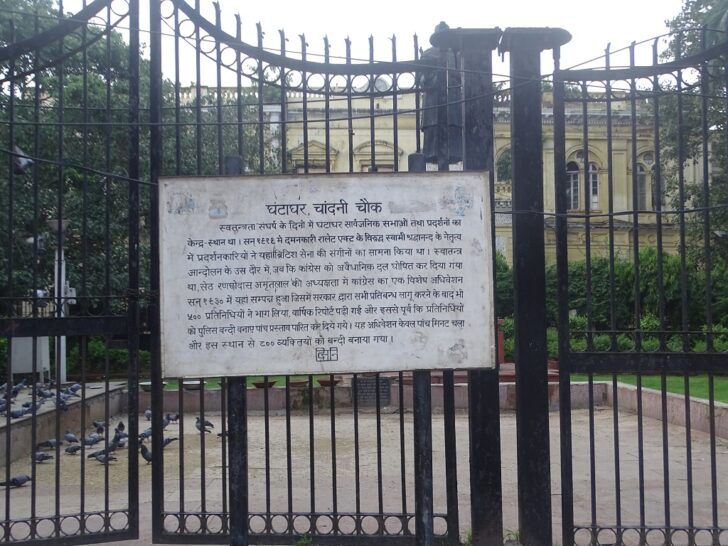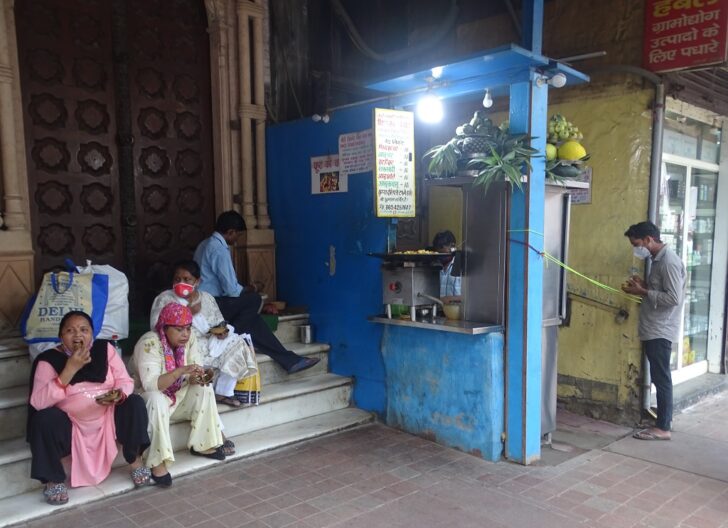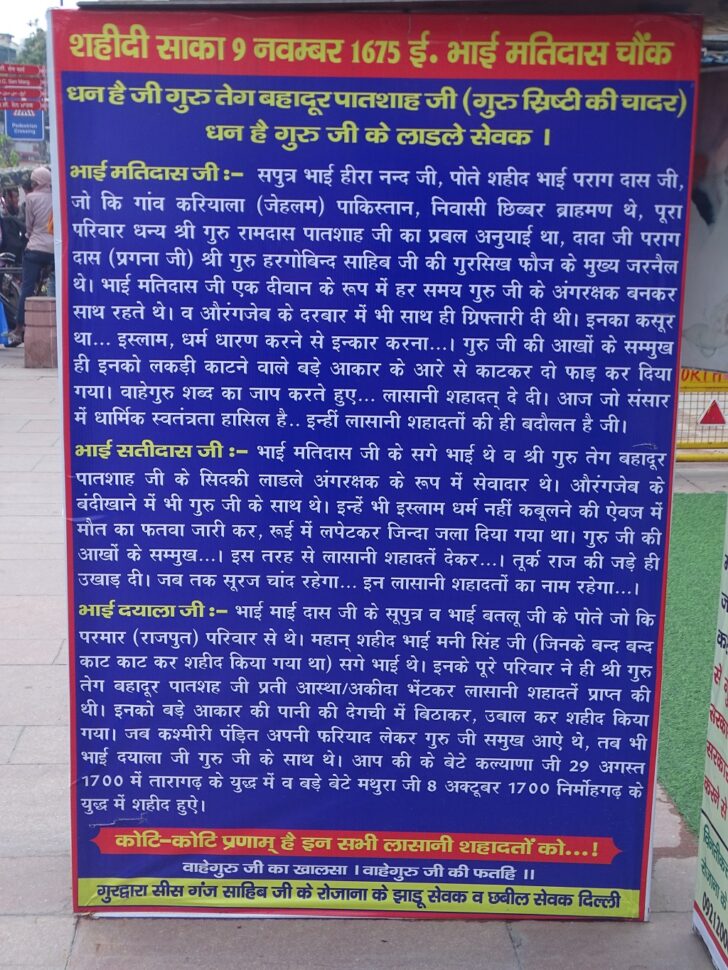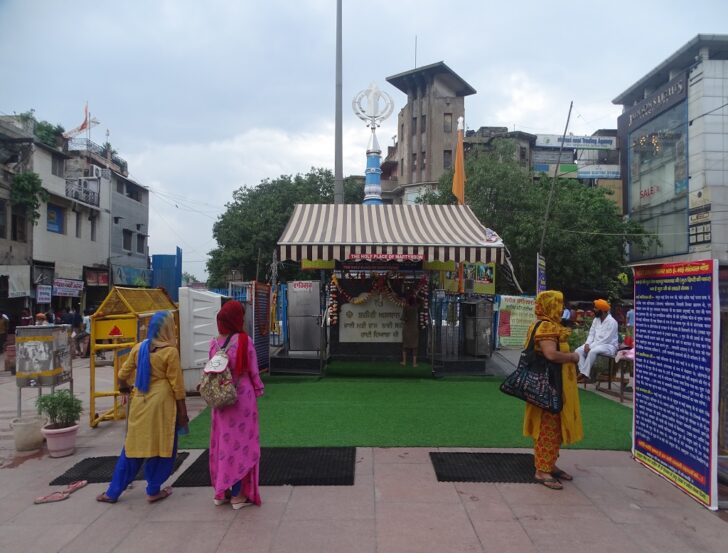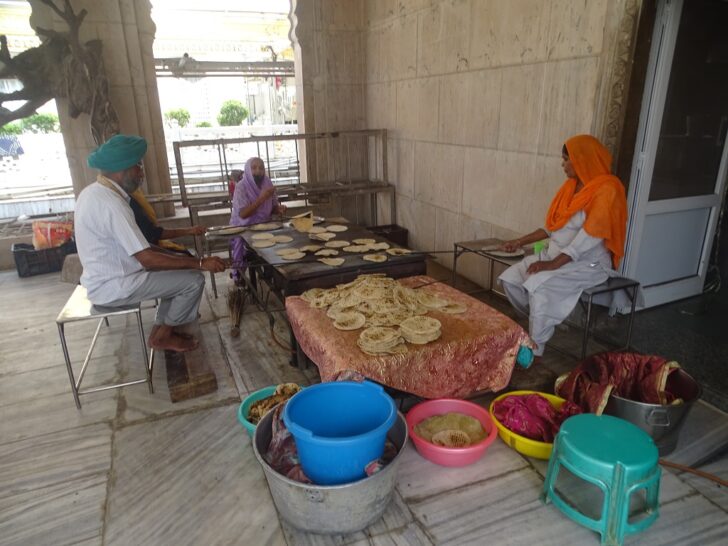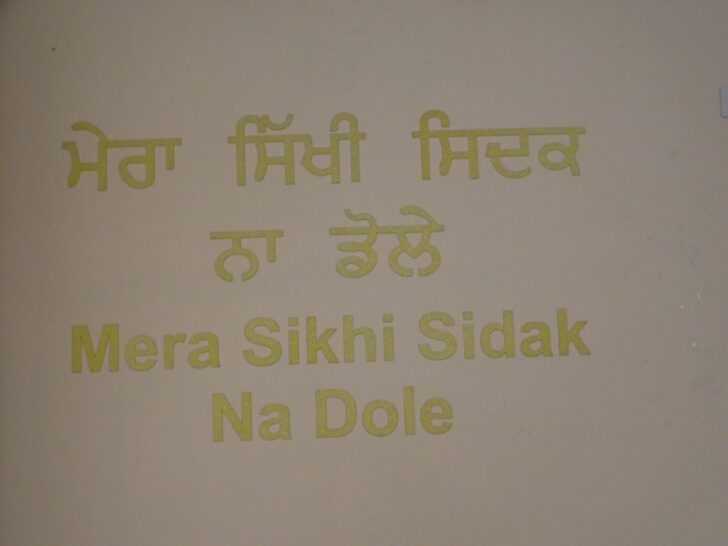Jung Bahadur Kachori Wala – more than 2,600 Google reviews. I decided to visit during my Old Delhi tour. But before that, I stopped at the entrance of Paranthe Wali Gali in the middle of Chandni Chowk Road.
Kanwarji Dalbiji Wala and Kanwarji’s Confectioners – started in the year 1850 by Late Lala Kanwar Sen. Two shops adjacent to each other, to inquire about its famous mouth-watering Dalbiji – can be stored for months.
As the recipe is a family secret, it was not shared by the person present but was displayed.
Thank you – said I. Knowledge enhanced. Maybe someday will buy Dalbiji from here for family – A thought and I walk towards the next adjacent shop – Kanwarji’s Confectioners – a two-side open shop famous for खस्ता (crispy) Kachori with the filling of potato-onion, etc. with red amchur (dry mango powder) and mint green chutney.
As I had a prior plan to visit Jung Bahadur Kachori Wala, I had Gulab Jamun (Hot) for Rs. 30 at Kanwarji’s Confectioners.
Delicious – it was. Amount paid.
As per my little knowledge, there are two ways to reach Jung Bahadur Kachori Wala.
One is via Paranthe Wali Gali and the other is walking further on Chandni Chowk Road towards Fatehpuri Masjid and enter Moti Bazaar (left-hand side). In the end, take a left turn to reach Jung Bahadur Kachori Wala – a tiny shop on the right-hand side.
Since 1961 at Chandni Chowk – currently run by the 3rd generation, recently opened a branch at Prashant Vihar, Rohini.
The best way to reach is via Chandni Chowk metro station, though I visited via Lal Quila metro station (opp. Red Fort).
Timings: 10:30 am till 7:30 pm (Sunday closed)
45 rupees per plate (2 Kachoris)
There are two ways to request Kachori to be served.
Crushed/Without Crushed with Aloo Sabzi, garnished with Coriander, Green Chilies, and Kachalu (Tapioca) Chutney on top.
I prefer – Crushed and without green chilies.
Urad Dal (Black Gram Skinned) stuffed – Hot, Crispy, Flaky, Spicy, Lip-Smacking & Mouth-Watering Kachoris that brings tears to my eyes, but I thoroughly enjoyed having it.
Winter might be the best season to have Jung Bahadur’s Urad Dal ki Kachori.
Note: Carry a water bottle or buy from the opposite general store.
Crowded/Congested location. One has to make a place for him/herself, but it’s a good stop to have a deep-fried stuffed snack after shopping or visiting as a tourist. One should have it at least once – a once-in-a-lifetime experience.
You can have it packed too but for a minimum of 2 plates.
Jung Bahadur Kachori Wala is mentioned by various newspapers and TV channels such as Hindustan Times, NDTV Food, Discovery Channel, and many more.. proudly displayed on the walls.
In short: My experience says – Jung Bahadur’s Urad Dal Kachori with Aloo Sabzi is Economical & Different. One may visit.
Next on the tour list, a little further on Chandni Chowk Road towards Fatehpuri Masjid – Pt. Ved Parkash Lemon Wale (left-hand side) – 120+ years old shop serving Soda + Lemon + Masala for Rs. 20 only.
